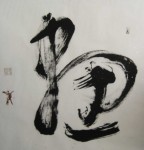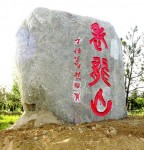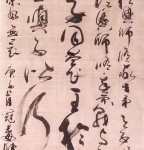| Article Index |
|---|
| Introduction to Chinese Calligraphy |
| Evolution and Different Styles |
| All Pages |
Evolution and Different Styles
The story of the development of Chinese characters is not a very simple and coherent one. Different types of characters and styles were accepted at different places, under different rules and at different times. The history of Chinese characters is simultaneously a long process of standardization and a search for alternative ways to express feelings through different styles. The intriguing thing is that some masterpieces that introduced a new revolutionary style were so admired that they were established as the new standard and form to be copied and studied by later generations.
In general Chinese calligraphy can be divided into five major styles: Zhuan Shu (篆书) today mostly confined to seal carving, Li Shu (隶书), the traditional official style (mainly dominant during the Han Dynasty 206 B.C.-220 A.D), Kai Shu (楷书), the most common form for printing which is also considered to be the standard form of writing Chinese, Xing Shu (行书), the most commonly used form of hand writing also known as 'running style' and finally Cao Shu (草书), the Chinese cursive style, mostly used by calligraphers for highly abstract works but also seen in everyday use.
All these major forms of calligraphy contain sub categories, the general division into five main styles is a simplification of a very diverse system of writing. There are also two earlier styles which are no more in common use and were not originally executed by brush, namely, the Jia Guwen ( 甲骨文) or "oracle bone script" and the Jin Wen (金文) which were characters engraved on bones, shells and bronze, sometimes categorized under Zhuan Shu.Finally, Calligraphy is a revered symbol of tradition, excellence and self cultivation in the cultures of China, Japan, korea and to a certain extent Vietnam. It was commonly believed that ones hand writing reflects ones spiritual and moral integrity, therefore candidates taking the exams for the imperial court were required to display solid calligraphic technique and deep understanding of this form of art. The theory that it is guided by is complex and demanding and the actual act of creation, not necessarily the outcome, elevates one to new heights of spirituality. Calligraphy has introduced the idea of visual abstraction and spontaneous expression to the world of Chinese art in a very early stage of development. Therefore accepted traditional elements in Chinese art were seen as revolutionary in West, therefore attracting the attention of many great modern Western artists who came under its influence and charm.
| < Prev | Next > |
|---|
- 2010-12-30 - History of Chinese calligraphy : South North and Sui dynasty
- 2010-12-24 - Oracle Bones of Ancient ChinaOracle Bone Script
- 2010-12-23 - 论用笔与结字:书法艺术成熟的三大历史阶段
- 2010-12-23 - Cursive Script of Chinese Calligraphy
- 2010-12-20 - The Calligraphic Spirit
- 2010-01-18 - Modern Poetry in China : A Shimmering Window
- 2010-01-10 - 关于“请循其本”:古代书法创作研究国际学术讨论会的几点感想
- 2009-12-02 - 浅析书法演进理路
- 2009-11-03 - 浅谈书法的艺术神韵(转载)
- 2009-10-10 - 对话朱守道、李一:论中国书法传统的继承与创新













